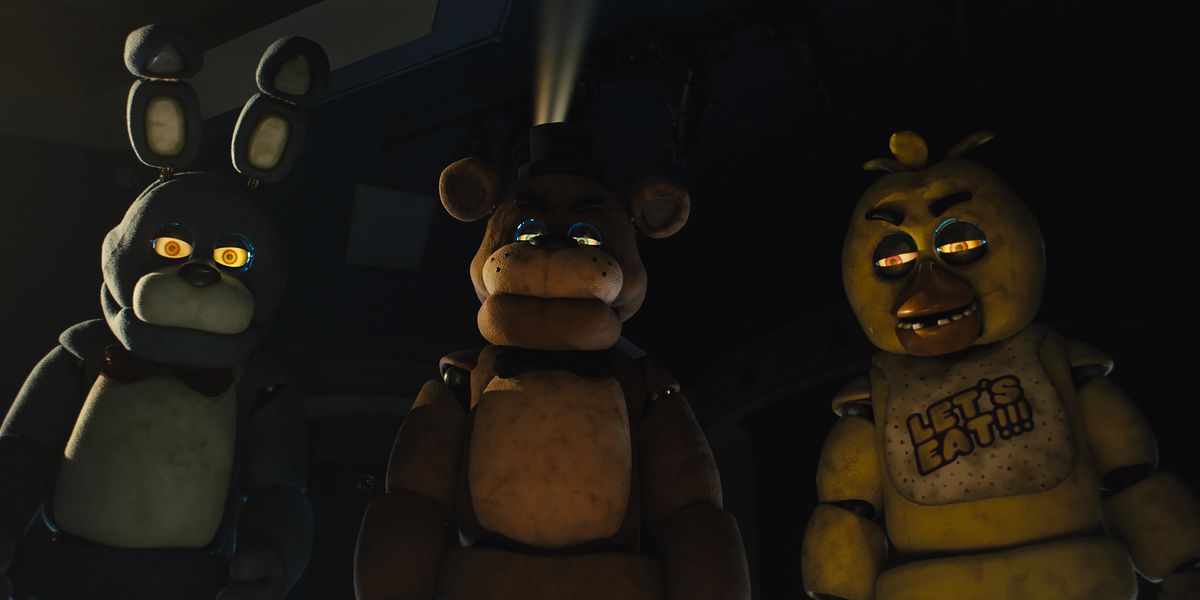Like many people, I became aware of Beyoncé as a director in 2016, when she released an hourlong video experience for Lemonade, labeled a “visual album.” It wasn’t her first visual album: She’d released one for 2013’s Beyoncé. And she wasn’t the only director on Lemonade: Six fellow directors worked with her. But still, it made an impression on me. Lemonade is a short film of unprecedented ambition, supported by a level of resources Black woman creators rarely get to access. It’s a poetic fever dream, both a broader story about Black women’s strength, suffering, joy, and healing in the United States, and an intimate portrayal of Beyoncé’s personal pain. When the final shot faded out, I turned to my sister and said, “That is one of the best movies I’ve seen all year.”
The new concert documentary Renaissance: A Film by Beyoncé — shot during her Renaissance World Tour, which ran from May to October — has different aims than Lemonade, or Bey’s later directorial work on Homecoming, Black Is King, and other projects. But it uses the same avant-garde, emotionally expressive editing logic that made that project so damn affecting.
Co-credited to Beyoncé and Lemonade producer Ed Burke, Renaissance is her most ambitious directorial project yet. At the same time, it’s a grounded behind-the-scenes story about the tangible logistics of a stadium tour. Early in the film, Bey and Burke show a series of shots where women on wires assemble her concert’s massive video screen on stage, panel by panel. Beyoncé explains that because the construction process takes so long, the Renaissance World Tour has three stages; while she’s performing on one of them, two others are being deconstructed or constructed at other tour stops.
To Beyoncé, the process behind a concert is beautiful, and she aims to highlight aspects of it, in both the live shows and the film documenting them. For the show, she dresses her stagehands in chrome coveralls designed to draw attention to their role in the performance. The movie includes shots of performers getting ready to enter or just having left the stage. It flashes back to the work Beyoncé and other artists do to fine-tune the details of her show ahead of the tour launch. Some of the people who work on the show talk to the camera about their own process, and how they came to be in her troupe.
Renaissance: A Film by Beyoncé never treats that behind-the-scenes work as less beautiful than the sparkle and shine of Beyoncé’s goddess-like stage presence. The film also never suggests that the show or the documentary itself are the work of a single person. This isn’t a vanity project, or a narrative about a single standout auteur: It’s a story that centers collaboration, both in front of and behind the camera.
As a director, Beyoncé intersperses shots highlighting tour logistics with an abstract cinematic language reminiscent of a music video, a Maya Deren film — or her Renaissance stage show. At times, the shots of her performance or the crowd’s reactions take on a VHS aesthetic that not only fits perfectly into the current Y2K nostalgia trend, but also has thematic relevance, reaching back to the early days of Beyoncé’s decades-long career. When the film later incorporates home videos from her ’90s childhood in Houston, Texas, or clips from her early career, that footage is among lo-fi friends.
:no_upscale()/cdn.vox-cdn.com/uploads/chorus_asset/file/25133362/Bey2.jpg)
Even the talking-head interviews, a classic element of a traditional music documentary, are more visually dynamic here than they would be in most docs. In one interview, Beyoncé is seen as an off-kilter reflection in a dressing room mirror, as she talks to both the camera and her mother, sitting nearby. That kind of directorial choice moves Renaissance so far past the usual perfunctory concert-doc experience that it occasionally slips into the sublime.
Beyoncé understands that music fans often go to concerts to satisfy a human need for community. At one point in her film, she tells the viewers that she wants her tours to be a transfer of healing energy, from her to the audience and back again. Film doesn’t have the same real-time connection between creator and viewer, so Beyoncé uses the specific strengths of the format to evoke some of the same feelings. In the middle of a serious, sexy stage performance, she brings the audience behind the scenes to show her kids giggling, as they dance like robots to the same song in a backstage green room. Then we’re back on stage, back in the performance.
Humanity is locked into the linear experience of time, moving forward in the world one second after the next, one step after another. Film has no such limits. Beyoncé moves across time and space in her film direction, attempting to recreate the visceral, emotional, joyful experience of attending — and perhaps, of performing — a life-changing concert.
Beyoncé’s musings in Renaissance on “time” and “light” — two of the most fundamental aspects of the cinematic form — underscore just how much she understands the medium’s potential. Concert films are often tasked with the near-impossible task of recreating the in-person concert experience. Many films try to do it by keeping the cameras trained on the stage and the performers, as if that’s the only place a concertgoer would ever look during a concert.
That’s a solid strategy for capturing all of a performance, but it lacks creative ambition. Renaissance isn’t pretending to be one performance, capturing the entirety of one evening onstage. It openly pulls from multiple performances, with Beyoncé wearing similar, but noticeably different magnificent outfits. The movie flits from one tour stop to another, with Beyoncé the director actively calling attention to the moves. That choice ensures that viewers aren’t just part of one show — we get to feel like we’re part of the tour itself, and part of a larger cultural movement.
:no_upscale()/cdn.vox-cdn.com/uploads/chorus_asset/file/25133374/Bey3.jpg)
As wealth continues to accumulate in the miniscule upper echelons of society, mainstream art is mostly getting less inspired. Too often, the films that actually make it into a movie theater are made not by people who have something to say, but by people who only know how to chase profit — or who are only allowed to chase profit. Beyoncé had the freedom to get ambitious with Renaissance: A Film by Beyoncé because it didn’t go through a major Hollywood studio: It’s from the production company Beyoncé built herself. She had to create the infrastructure for her music, tour, and movies herself, because the infrastructure America has constructed isn’t friendly to Black women — or to most people out creating their own art.
Maya Deren, the legendary experimental filmmaker whose style Beyoncé’s often reminds me of, was skeptical of artistic possibility within a professional filmmaking context. Renaissance: A Film by Beyoncé was certainly made with profit in mind — Beyoncé’s extreme consolidation of wealth is not above reproach or criticism. But unlike with so many modern theatrical releases, making money doesn’t seem to have been the only motivator. “The most important part of your equipment is yourself: Your mobile body, your imaginative mind, and your freedom to use both,” Deren wrote in the 1940s. “Make sure you do use them.” In a world built to keep Black women from expressing themselves, Beyoncé is answering that call, on all three counts.
Renaissance: A Film by Beyoncé is in theaters now.






